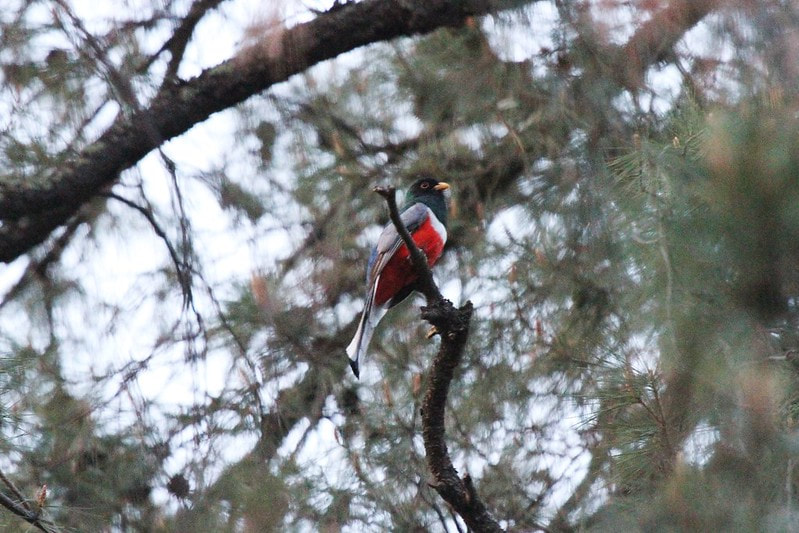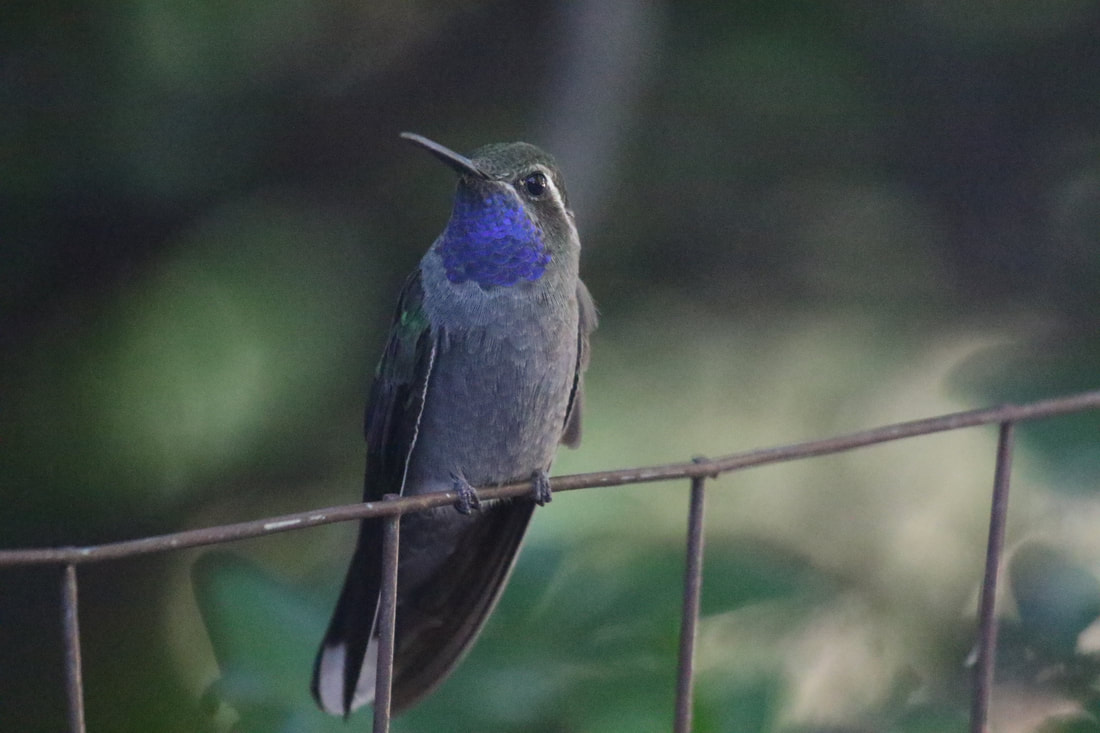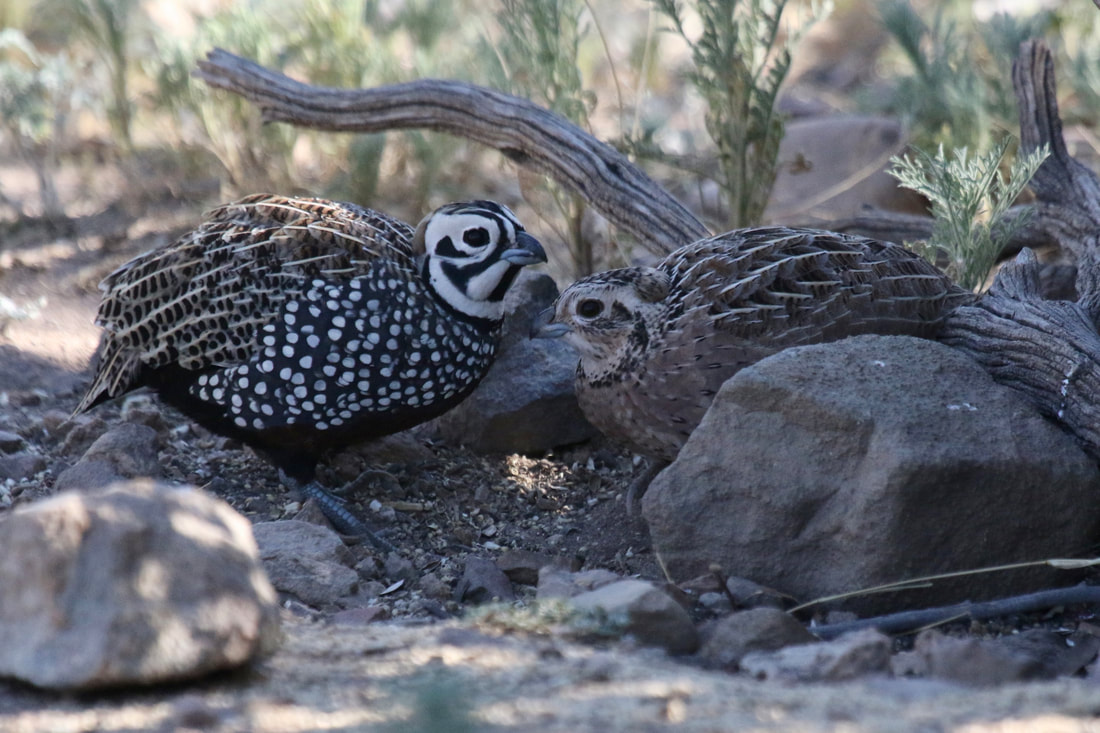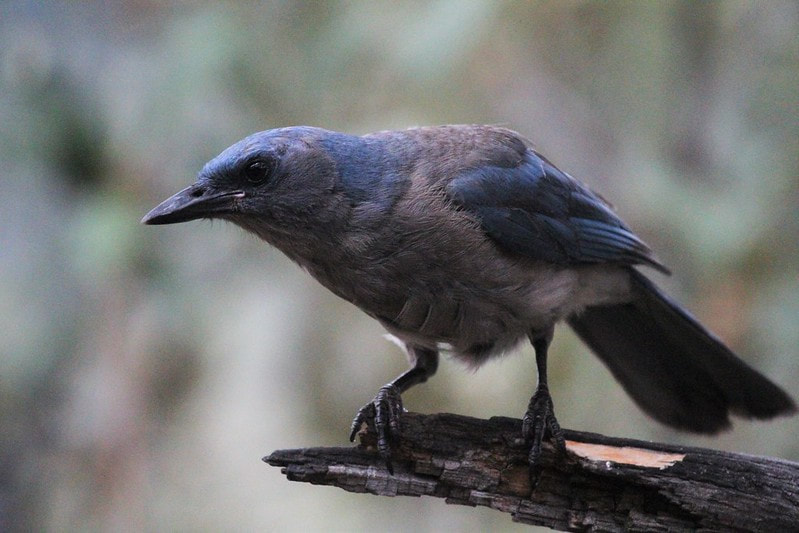|
12/4/2023 Itinerary for Hummingbirds and other arizona specialties of the sky island mountainsRead NowHummingbirds and other Arizona Specialties of the Sky Island Mountains July 23-July 30, 2025 8 Days & 7 Nights Max: 6 Participants Day 1 (Wednesday, July 23rd, 2025): Species important on this day: Mexican Duck, shorebirds, and Chihuahuan Raven & Meadowlark Please try and land BEFORE 3:00pm on this day at the Tucson International Airport. Once everyone arrives and we get all loaded into the van, we will make our way towards Portal, Arizona and the Chiricahua Mountains. We’ll likely make a pitstop just outside of Wilcox at Lake Cochise to look for Mexican Duck, shorebirds, and other desert species such as Chihuahuan Raven & Meadowlark. We’ll then continue to drive southeast and will arrive at Cave Creek Ranch shortly after sunset and get settled into the cabins. Night 1: Portal, Arizona Day 2 (Thursday, July 24th, 2025): Species important on this day: Blue-throated Mountain-gem, Mexican Whip-poor-will, Whiskered Screech & Elf Owls, Elegant Trogon, Acorn & Arizona Woodpecker, Greater Pewee, Sulphur-bellied Flycatcher, Mexican Jay & Chickadee, Painted Redstart, and Hepatic Tanager The first location that we’ll stop at is Cave Creek Canyon after leaving our cabins at around sunrise. Here we will look for plenty of southeast Arizona specialties, including Elegant Trogon, Sulphur-bellied Flycatcher, and Painted Redstart. We’ll continue to increase elevation throughout the morning until we reach Rustler Park. There are several species that we will be on the lookout for in this high elevation forest, including Greater Pewee, Steller’s Jay, Mexican Chickadee, Red Crossbill, and Yellow-eyed Junco. We’ll make a brief stop on the other side of the mountains to look for Buff-breasted Flycatcher and Red-faced Warbler, but heading back to the cabins. Elegant Trogon will be one of the species we'll spend plenty of time looking for on not just this morning, but throughout the trip. Cave Creek Canyon is likely the best area to look for this species (where the picture was taken) in Arizona! We’ll spend a couple hours at the cabins to relax or watch the feeders throughout the property to get better views of the species that frequent the property, including Gambel’s Quail, Blue-throated Mountain-gem, Acorn & Arizona Woodpeckers, and Black-headed Grosbeak. After we finish dinner, we’ll hop back into the van to look for a few nocturnal species that are nearby. Some of these include Mexican Whip-poor-will, Common Poorwill, and Whiskered Screech and Elf Owls! Arizona Woodpecker is one of two woodpecker species that frequents the feeders at cave Creek Cabins! Night 2: Portal, Arizona Day 3 (Friday, July 25th, 2025): Species important on this day: Scaled & Montezuma Quail, Greater Roadrunner, Lucifer Hummingbird, Gila Woodpecker, Thick-billed Kingbird, Cactus Wren, Crissal Thrasher, Cassin’s & Botteri’s Sparrows We’ll start this day with watching the feeders on the property before packing everything up and loading the van. We’re not completely finished with the Portal area though. We’ll check out the Southwest Research Station feeders as sometimes there are more hummingbirds that visit these feeders. This will also be our best chance to see Montezuma Quail along the road during the trip, but we may have better success later on this day. As we leave Portal, we’ll make a brief stop for Thick-billed Kingbird, as well as a few desert species including Crissal Thrasher and Cassin’s & Botteri’s Sparrows Blue-throated Mountain-gem is one of the most common species of hummingbird in the Chiricahuas, but will become less expected once we leave these mountains. Most of the early afternoon will be spent on the road driving to Sierra Vista from Portal. We’ll get settled into our rooms, eat an early dinner, and set out for an evening at Ash Canyon at the feeders to look for Montezuma Quail and Lucifer Hummingbird that can be seen best in the evening, two of the most beautiful species in Arizona and we have chances to see both species close up! We’ll likely see a few Lesser Nighthawks flying over here or on the way back to where we are staying. Occasionally a pair or two of Montezuma Quail can visit the feeders during the evening. This secretive species is high on most birder's wish lists when visiting the region! Night 3: Sierra Vista, Arizona Day 4 (Saturday, July 26th, 2025): Species important on this day: Rivoli’s, Calliope, & White-eared Hummingbirds Hummingbird lovers within the group will absolutely love this day. We’ll spend most of the morning watching the feeders at Miller Canyon which in recent years is the best location in the United States to see White-eared Hummingbird. Besides this species, many other hummingbird species can be seen including Rivoli’s, Black-chinned, Anna’s, Calliope, Broad-tailed, Broad-billed, and Rufous Hummingbirds. A few other (but rarer) possibilities include Violet-crowned, Berylline, and Allen’s Hummingbirds as well as Plain-capped Starthroat. We’ll take a lunch break then visit the Ramsey Canyon feeders with the same possibilities once again. After dinner we’ll make our way back to Ash Canyon for another evening watching the feeders here for new species for the day including Montezuma Quail and Lucifer Hummingbird once again. Although we'll likely see up to 10 species of hummingbird on this full day of 'humming birding,' we'll spend the most effort searching for one or two White-eared Hummingbirds that can be found visiting hummingbird feeders in the Huachucas. Night 4: Sierra Vista, Arizona Day 5 (Sunday, July 27th, 2025): Species important on this day: Common Ground Dove, American Goshawk, Northern Pygmy-Owl, Bridled Titmouse, Lucy’s, Grace’s & Red-faced Warblers, and Western Tanager The fifth day will be the day that we will walk the most, probably more than the rest of the trip combined. We’ll arrive at Ramsey Canyon at or just before sunrise and start the trek up the canyon. The trail is a few miles long, but we will hike slowly, watch for birds along the way, and turn around 2-3 miles in. We’ll take our time so we can hear and see plenty of the higher elevation species that can be found along this trail, which is our best chance to see Red-faced Warbler. We’ll also try and get plenty of visuals of any of the species along this trail as this will be our last opportunity to see many of these species, at least well. We'll see plenty of Mexican Jays at higher elevations, including at Ramsey Canyon! We’ll grab lunch and head back for an early afternoon siesta. In the evening, we’ll go east of town to bird at the San Pedro House and nearby trails for a couple of hours. This is a great location to see plenty of riparian and desert species along the San Pedro River. We’ll see many Common Ground Doves, Gila Woodpeckers, Vermillion Flycatcher, Abert’s Towhee and Lucy’s Warblers, as well as a few mostly eastern species such as Yellow-billed Cuckoo and Yellow-breasted Chat. Night 5: Sierra Vista, Arizona Day 6 (Monday, July 28th, 2025): Species important on this day: Violet-crowned Hummingbird, Gray Hawk, Rose-throated Becard, Grasshopper, Cassin’s, & Botteri’s Sparrows, Chihuahuan Meadowlark, and Varied Bunting On this second to last full day, we’ll depart early in order to reach the Las Cienegas Grasslands to listen and see some grassland species during the morning. Some of these species include Grasshopper, Cassin’s, & Botteri’s Sparrows and Chihuahuan Meadowlark. Perhaps we’ll be lucky enough to see the first White-tailed Kites and Lark Buntings arriving back from their breeding grounds from the north. We’ll then go towards Patagonia and stop at Paton’s Center for Hummingbirds to look for Violet-crowned Hummingbird, and a few other species including Gambel’s Quail. We’ll continue south then back north towards Green Valley after a brief stop at Amado Water Treatment Plant for a few aquatic species, including Black-bellied Whistling-Duck and Neotropic Cormorant. Before we get settled into our hotel, if it isn’t too hot, we’ll search for a few desert species around Green Valley, including Costa’s Hummingbird, and Harris’s Hawk, Gilded Flicker. We’ll then go to our hotel, get unpacked, but then hop back in the van for some evening birding. We would have done this location on the way, but in order to maximize the number of birds, I would have checked it in the evening rather than the afternoon. We’ll go to the De Anza Trail just outside of Tubac to look for a few southern riparian species, including Gray Hawk, Northern Beardless-Tyrannulet, Rose-throated Becard, and possibly even a Green Kingfisher. We'll find Gray Hawks either soaring above riparian habitat or sitting on top of telephone poles like the one pictured! Night 6: Green Valley, Arizona Day 7 (Tuesday, July 29th, 2025): Species important on this day: Black-capped Gnatcatcher, Five-striped & Rufous-winged Sparrows, and Varied Bunting Montosa Canyon is only a few miles outside of Green Valley and provides great habitat for some desert species. Some of the species that call this area home include a couple of Mexican species that are in very small numbers, including Black-capped Gnatcatcher and Five-striped Sparrow, this is also great habitat to look for Varied Bunting as well. We’ll also make a stop at Proctor Canyon just before Madera Canyon if we do not have luck yet with Rufous-winged Sparrow. Lastly, we’ll check the feeders at the Santa Rita Lodge. We’ll continue up to our hotel near the Tucson airport, get settled in, and go out for one last meal for the trip. Broad-billed Hummingbirds will be one of the most common hummingbird species throughout the trip, but we'll see plenty at our last stop of the trip at Madera Canyon! Night 7: Tucson International Airport, Arizona Day 8 (Wednesday, July 30th, 2025): Please plan to depart out of Tucson International Airport no later than 2pm on this day. Thanks! What’s included:
What’s not included: - To and from travel from Tucson International Airport - Any alcoholic purchases throughout the trip If you would like to ride down with me from Jonesboro, Arkansas, you can do so for an additional cost of $400. (3 people max). This would involve leaving Tuesday, (July 23rd) and arriving on Saturday, (August 3rd). Cost: Double occupancy: $2,250 Single occupancy: $2,750 Please email me: [email protected] if you have any questions or are interested. You can also text me if you have my phone number. I am excited to rack up some beautiful Sky Island species for your list! For payment, checks are preferred to be mailed in, but other payment methods can be discussed.
0 Comments
Leave a Reply. |
Details
AuthorWrite something about yourself. No need to be fancy, just an overview. ArchivesCategories |








 RSS Feed
RSS Feed